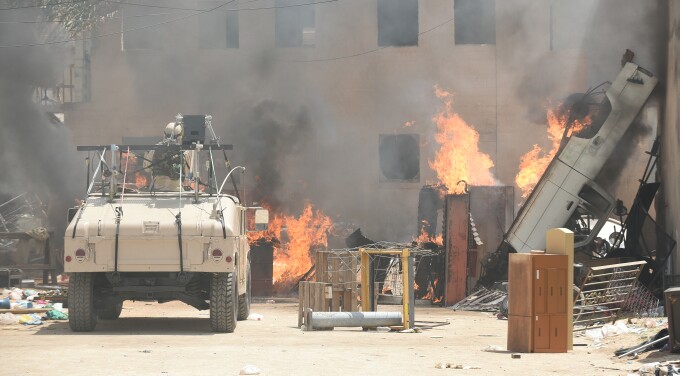The Long Road Home focuses on one day of the war, April 4, 2004, which began with the most mundane of assignments. American soldiers were accompanying sanitation workers on their rounds. They were ambushed, and by nightfall eight Americans were killed, as were hundreds of Iraqis. Over the next year, an additional 160 soldiers from the Army’s 1st Cavalry Division died in this battle.

This is a drama series rather than a documentary, and a few minor liberties have been taken – there is at least one composite character, an Iraqi interpreter who helps explain how the two cultures clashed. The series shares the perspectives of soldiers in Iraq and their families at Fort Hood. In interviews in Killeen and Los Angeles, the stars, Raddatz, showrunner Mikko Alanne and Nat Geo executives all told me why this project profoundly touched them.
“He spent his time giving aid while being shot at and feeling very useless,” Jeremy Sisto (pictured at top) said of Staff Sgt. Robert Miltenberger, whom he portrays. “It was at the end of a 20-year run and he was following orders, which is what you do as an enlisted man.” As bullets rained down on them, Miltenberger ministered to three seriously wounded men while returning fire. This scene was recreated on an oppressively hot night as one day slid into the next.
Actors playing soldiers piled into a light medium tactical vehicle, essentially a pick-up truck without armored protection or even a two-way radio. Extras, posing as insurgents on rooftops, picked them off as if this were some obscene carnival game.
Back at base, commanding officers strategized over rescuing stranded men. Michael Kelly of House of Cards plays Lt. Colonel Gary Volesky, one of those commanders. “I could identify very much with that character,” Kelly said of Volesky, now a three-star colonel. “I am a person who believes we are good. We are all born amazing, wonderful, non-judgmental individuals. It is what happens after that changes us.”
The hierarchy on base mirrors that on the front, so officers’ wives tend to be leaders, helping other Army wives. Sarah Wayne Callies of The Walking Dead related to portraying LeAnn Volesky, as she married into a military family. She wants this series to raise awareness about soldiers’ suffering after they return home.
“They are not all on the battlefield but the battlefield is still in them,” Callies explained to me. “I want people to take away a total devotion to healing our veterans. It’s an American issue.”